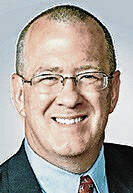
Economists have been seriously studying migration for a couple centuries; for me it’s been a couple of decades. Over that time, we’ve learned a few useful things that should help elected leaders think about why places grow or shrink.
First, most migration is concentrated among younger people with high human capital. Yes, retirees move, as do folks in midlife, but most don’t. One result of the age concentration of migrants is that this movement of people also drives natural population change of births minus deaths. So, places with net in-migration tend to thrive over the coming decades, while places that lose folks do not.
Migration in the Midwest really comes down to economic opportunity and quality of life, and the empirical evidence is now extraordinarily clear: Places with restrictive social policies in the United States fail to become destinations for economic opportunity. They struggle to attract and retain their share of well-educated people. That trend is sure to continue, if not accelerate.
Our national focus on school quality made available actual data at the school level. This data revealed surprisingly vast differences between schools. At the same time, labor markets began valuing education far more heavily. So, for the past couple of decades, it has become obvious that the quality of a K-12 and college education were prime determinants of economic opportunity for individuals.
In the post-COVID environment, the role of quality of life is even stronger. Today a quarter of all young, educated people have full-time remote jobs, and half work at least partially remote. The certain effect of this is that the amenities (and dis-amenities) of a region will weigh more heavily on prospective residents than ever before.
We know from recent research what the most popular attributes of a region are. First, they are superb (not merely good) schools and an absence of crime. A few natural amenities matter, but they are less important than local recreational opportunities. Healthier populations lead to higher quality of life in a region, which is likely connected to recreational opportunities. None of this should be news to anyone.
What is new is the fact that the effect of quality of life on population growth is close to four times larger after COVID than in the decade before. Much of that is due to remote work accelerating the existing trends. We don’t yet know how long that will last, but my guess is for at least a generation. We also know that a welcoming social climate matters.
States, cities and towns who make themselves unwelcoming toward groups of people have and will find themselves with fewer of those residents, and fewer of their friends and family members. With economic opportunity wrapped so closely to quality of life, we should expect preferences toward state and local policies to play an increasing role in local choices. None of this can be ignored.
Michael J. Hicks is the director of the Center for Business and Economic Research and an associate professor of economics in the Miller College of Business at Ball State University. Send comments to [email protected].
